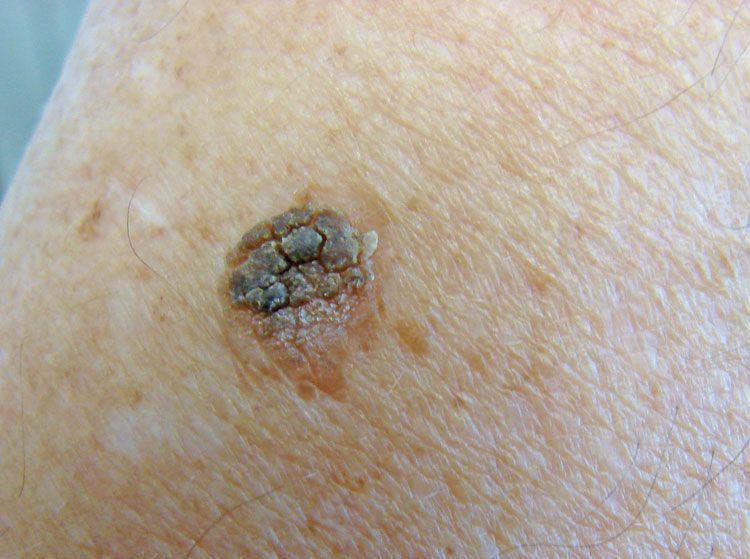- CDC
- Heart Failure
- Cardiovascular Clinical Consult
- Adult Immunization
- Hepatic Disease
- Rare Disorders
- Pediatric Immunization
- Implementing The Topcon Ocular Telehealth Platform
- Weight Management
- Monkeypox
- Guidelines
- Men's Health
- Psychiatry
- Allergy
- Nutrition
- Women's Health
- Cardiology
- Substance Use
- Pediatrics
- Kidney Disease
- Genetics
- Complimentary & Alternative Medicine
- Dermatology
- Endocrinology
- Oral Medicine
- Otorhinolaryngologic Diseases
- Pain
- Gastrointestinal Disorders
- Geriatrics
- Infection
- Musculoskeletal Disorders
- Obesity
- Rheumatology
- Technology
- Cancer
- Nephrology
- Anemia
- Neurology
- Pulmonology
A Routine Seborrheic Keratosis
A number of clues suggest that this pigmented lesion is a seborrheic keratosis, including its rough surface, truncal location, and age of the patient (59 years).

A 59-year-old man became concerned when a long-standing pigmented lesion on the shoulder began to both expand and develop multiple colors.
Key point: The “rough”-appearing surface topography, truncal location, and age of the patient all suggest that this is a routine seborrheic keratosis.
Treatment: A superficial shave excision/biopsy was done to alleviate the patient’s anxiety. The lesion did prove to be a seborrheic keratosis.
Note: Many seborrheic keratoses are multi-colored. Many will also grow larger after a long period of stability. When you are in doubt, or when the patient is very anxious, a biopsy (or conservative removal) is indicated.
Biden Administration Announces First 10 Prescription Drugs Slated for Price Negotiations
August 29th 2023The first 10 drugs identified for negotiations under the Inflation Reduction Act include several well advertised agents indicated to treat diabetes, heart failure, and other chronic diseases.
